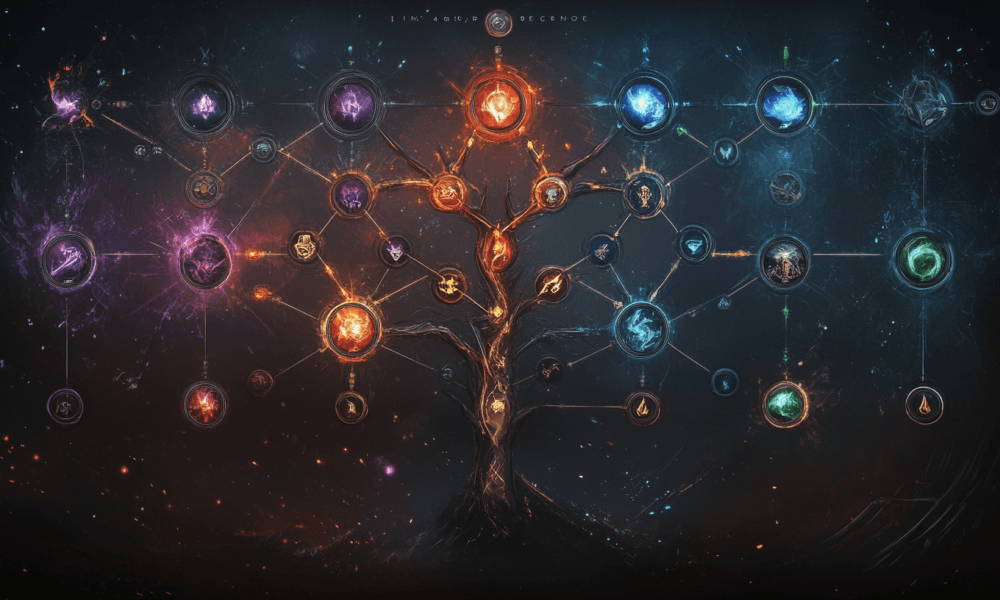Game Development: Designing and Building Engaging Games
Game development is a creative and technical process that involves designing, building, and bringing games to life. Crafting an engaging game requires a blend of artistic vision, technical skills, and a deep understanding of player psychology. Whether you are an aspiring game developer or a seasoned professional, understanding the intricacies of game design and development can help you create experiences that captivate players and keep them coming back for more. In this detailed guide, we will explore the key components of game development, the process of designing engaging gameplay, and the steps involved in building a successful game.
Understanding Game Development
Game development is the process of creating a video game, from concept to final product. It encompasses multiple disciplines, including game design, programming, art, animation, sound design, and testing. Game development can be done by large teams in established studios or by small indie developers, with each approach offering unique challenges and opportunities.
The Stages of Game Development
- Concept and Planning: The first stage of game development involves coming up with a concept, creating a game design document (GDD), and planning the project’s scope and goals.
- Design: Game design is the process of defining gameplay mechanics, level structure, character development, and story. It involves creating a blueprint for the game.
- Production: Production is the actual development phase, where game assets are created, code is written, and the game starts to take shape.
- Testing: Testing involves identifying and fixing bugs, ensuring smooth gameplay, and optimizing the game for performance.
- Launch and Post-Launch Support: Once the game is ready, it is released to the public. Post-launch support includes updates, patches, and content expansions.
Designing Engaging Games
Designing an engaging game is an art that combines creativity, user experience, and psychology. Engaging games are those that keep players immersed, motivated, and excited to progress. Here are key elements to consider when designing engaging games:
1. Compelling Game Mechanics
Game mechanics are the rules and systems that define how players interact with the game. Designing compelling game mechanics is essential for creating an enjoyable experience.
- Core Gameplay Loop: The core gameplay loop is the central activity that players will repeat throughout the game. It should be rewarding, fun, and challenging. Examples include collecting items, solving puzzles, or defeating enemies.
- Balanced Difficulty: Difficulty should be balanced to provide an appropriate level of challenge without becoming frustrating. Difficulty curves that gradually increase ensure players feel rewarded for their progress.
- Player Agency: Players should feel a sense of agency and control over their actions. Choices and consequences in gameplay can add depth and increase player engagement.
2. Engaging Storytelling
Storytelling plays a significant role in player engagement. A well-crafted narrative can make the game experience more immersive and emotionally impactful.
- Character Development: Create well-rounded characters that players can relate to or empathize with. Character backstories, motivations, and development arcs make the story more compelling.
- World-Building: A rich, detailed game world can make players feel like they are part of a larger universe. Consider elements like lore, history, and environmental storytelling to enhance immersion.
- Interactive Narrative: Allow players to influence the story through their choices. Branching storylines, multiple endings, and moral dilemmas give players a sense of ownership over the narrative.
3. Rewarding Progression System
A rewarding progression system is crucial for keeping players motivated and invested in the game. Progression can take many forms, including leveling up, unlocking new abilities, or earning in-game rewards.
- Leveling and Skill Trees: Leveling up and skill trees provide players with a sense of growth and achievement. Skill trees allow players to customize their abilities, which adds a layer of personalization.
- Achievements and Rewards: Achievements, collectibles, and in-game rewards provide extrinsic motivation for players to keep playing. Rewards should be meaningful and relevant to the player’s progress.
- Clear Goals: Set clear, achievable goals for players to work towards. Goals can include completing missions, reaching milestones, or defeating specific enemies.
4. Immersive Game Environment
Creating an immersive game environment is essential for drawing players into the game world. The environment should be visually appealing, interactive, and cohesive with the game’s theme.
- Art and Graphics: The visual style of the game, whether realistic or stylized, plays a key role in creating immersion. Consistent art direction helps maintain the player’s sense of immersion.
- Sound Design: Sound effects and background music enhance the player’s experience and set the mood for different game scenarios. Consider using dynamic music that changes based on the player’s actions.
- Interactive Elements: Interactive elements, such as destructible objects or hidden secrets, make the game world feel alive and encourage exploration.
Building a Successful Game
Building a successful game involves both the technical and creative aspects of development. Here are the steps to take when building an engaging game:
1. Create a Game Design Document (GDD)
A Game Design Document (GDD) is a comprehensive guide that outlines every aspect of your game, including gameplay mechanics, story, art, and technical specifications.
- Game Mechanics and Systems: Define the core gameplay mechanics, controls, and game systems.
- Story and Characters: Outline the storyline, characters, dialogue, and world-building elements.
- Art and Audio: Describe the visual style, art assets, sound effects, and music that will be used.
2. Choose the Right Game Engine
Choosing the right game engine is a crucial decision that affects the entire development process. The game engine is the software framework that helps developers create games efficiently.
- Popular Game Engines: Unity and Unreal Engine are two of the most popular game engines, offering powerful tools for both 2D and 3D game development.
- Engine Capabilities: Consider the features you need for your game, such as graphics capabilities, ease of use, and community support, when choosing an engine.
- Prototyping: Use the game engine to create prototypes that help you test gameplay mechanics and make adjustments early in the development process.
3. Develop Game Assets
Game assets include all visual, audio, and interactive elements of the game. Creating high-quality assets is key to building an immersive experience.
- 3D Models and Animations: For 3D games, create character models, animations, and environment assets. Tools like Blender or Maya can be used to create 3D assets.
- 2D Sprites and Graphics: For 2D games, create sprites, backgrounds, and user interface elements. Tools like Adobe Photoshop or Aseprite are popular for 2D asset creation.
- Sound Effects and Music: Create or source sound effects and background music that match the tone and theme of your game. Tools like Audacity or Logic Pro can be used for audio production.
4. Implement Gameplay and Mechanics
Gameplay implementation is the phase where you bring the game’s design to life through programming. This involves writing code to implement game mechanics, player controls, and interactions.
- Scripting and Coding: Use the game engine’s scripting language to implement gameplay features. Unity uses C#, while Unreal Engine uses both C++ and Blueprint scripting.
- Collision and Physics: Implement collision detection and physics to ensure that characters and objects interact naturally within the game environment.
- User Interface (UI): Create an intuitive UI that helps players navigate menus, view their stats, and interact with the game.
5. Test and Optimize
Testing is an essential step to ensure that the game is bug-free, balanced, and enjoyable. Optimization is also important for ensuring that the game runs smoothly across different platforms.
- Playtesting: Conduct playtesting sessions to identify bugs and gather feedback on gameplay experience. Playtesting helps ensure that the game is balanced and fun.
- Bug Fixing: Fix any bugs or glitches that are identified during testing. Address any issues that may affect gameplay or performance.
- Optimization: Optimize the game’s performance by reducing load times, minimizing resource usage, and ensuring smooth frame rates. This is especially important for mobile and console games.
Conclusion
Designing and building engaging games requires a combination of creativity, technical skills, and a deep understanding of player psychology. By focusing on key elements like compelling mechanics, engaging storytelling, rewarding progression, and immersive environments, you can create games that captivate players and keep them coming back for more. Whether you are working on your first game or are an experienced developer, understanding the entire game development process—from concept to launch—will help you create successful and enjoyable experiences for your audience.




No Comment! Be the first one.